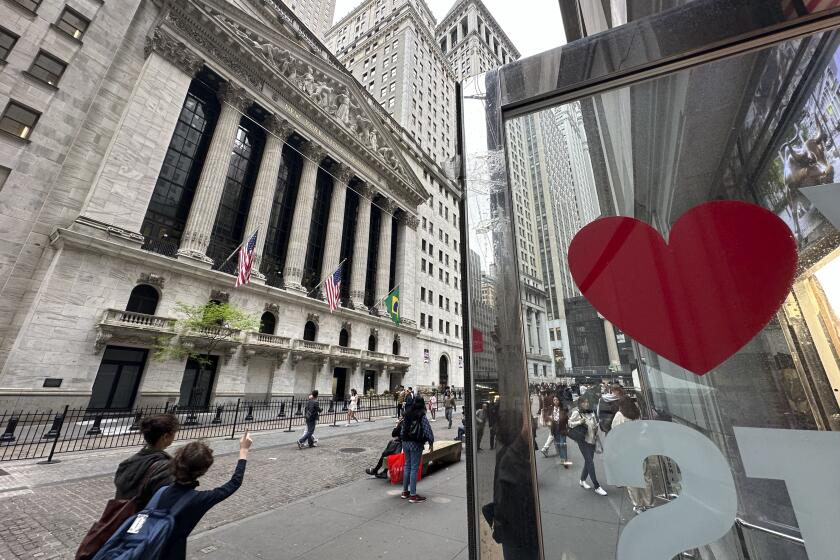Jobless Claims at Lowest Rate in Five Months : Economy: But California is one of five states reporting large increases in applications.
Applications by newly laid-off Americans for jobless benefits have fallen to their lowest level in five months, leading some analysts to suggest that business cutbacks to reduce excessive inventories may be ending.
However, California continued to go against the trend, reporting one of the largest increases in new jobless claims.
Separately, automobile and credit card borrowing increased in May, the government said Thursday.
Robert G. Dederick, an economist with Northern Trust Co. in Chicago, said the decline in first-time jobless claims is “consistent with the notion that the inventory correction, which has been an important factor in holding back (economic) growth, has probably passed its worst.”
“It doesn’t mean it’s over and it doesn’t mean we’re going to get a burst of production,” Dederick said. “But the biggest negative drag probably is behind us.”
The Labor Department said Thursday that first-time claims for unemployment insurance dropped by 12,000 last week for the second week in a row. The 327,000 in new claims was the lowest since 325,000 applications were filed during the week ended Feb. 13.
Many analysts had predicted an increase of several thousand.
The four-week moving average, which smoothes out the volatility of the weekly claims and is considered a better gauge of the labor situation, fell by 4,000 to 340,500. That was the lowest since the average stood at 339,500 during the four weeks ended May 22.
Twenty-eight states and territories reported decreases in regular claims during the week ended June 26, and 25 recorded increases.
States reporting the biggest declines were Illinois, 3,966; Indiana, 1,368; Delaware, 1,117; Alabama, 1,020, and Ohio, 1,000.
States with the largest increases were New Jersey, 1,694; Connecticut, 1,632; California, 1,453; Massachusetts, 1,437, and Rhode Island, 871.
The emergency claims and individual state figures lag the overall total and the four-week moving average by one week. The national figures are adjusted for seasonal variations, but the individual state figures and the emergency program numbers are not.
Separately, the Federal Reserve Board reported that car loans rose at a seasonally adjusted annual rate of 7.9%, compared to a 1.7% gain in April. Revolving credit, which includes credit cards, advanced at a 4.3% annual rate, compared to a 7.9% rate the month before.






